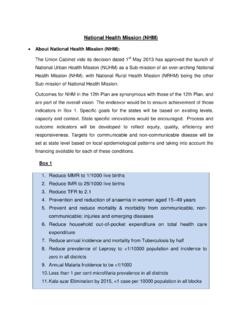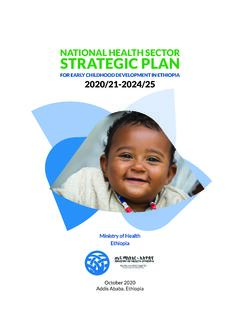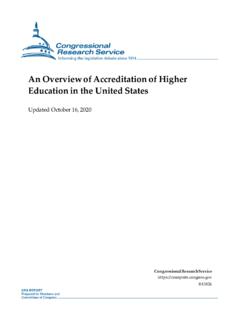Transcription of Report of THE INDEPENDENT REVIEW OF ADULT ... - NHS …
1 Report of THE INDEPENDENT REVIEW OF ADULT SCREENING PROGRAMMESin EnglandOctober 2019 Publication approval reference: 010892 INDEPENDENT REVIEW of ADULT Screening Programmes in EnglandThis is an INDEPENDENT REVIEW commissioned by NHS England (Publication reference 01089).The copyright holder, Professor Sir Mike Richards, has consented to third parties re-publishing the material contained in this Report . Where any material, or the copyright in such material, is identified as being owned by a third party you will need to obtain permission from that third party before republishing such REVIEW of ADULT Screening Programmes in EnglandCONTENTSF oreword 4 Executive summary 81.
2 What do we mean by screening? 172. Looking to the future 233. Approach taken for this REVIEW 314. Where are we now? 355. Governance 406. Information systems 537. Uptake and coverage 588. Wider performance issues 759. Financial incentives to improve outcomes and uptake of screening 8010. Creating capacity for change 8311. Improving audit and research 89 Glossary 96 Appendix A: Further information on the activity of the REVIEW 100 Appendix B: Population screening programmes in England 105 Appendix C: NHS Abdominal aortic aneurysm screening programme 109 Appendix D: NHS Bowel cancer screening programme 113 Appendix E: NHS Breast screening programme 117 Appendix F: NHS Cervical screening programme 122 Appendix G: NHS Diabetic eye screening programme 128 Appendix H.
3 Current IT systems supporting NHS screening in England 1334 INDEPENDENT REVIEW of ADULT Screening Programmes in EnglandFOREWORDI was originally commissioned to undertake this REVIEW following a difficult period for NHS cancer screening, in which two national incidents had been declared. As I published interim findings of a REVIEW into the management of cancer screening programmes last May, my terms of reference were significantly extended to include other ADULT screening programmes. In this context, I would like to start by clarifying the remit of this Report . Screening is a widely used term and encompasses a range of activity. My REVIEW has focused on screening programmes which target the ADULT population and importantly, also require people to be actively called and recalled for screening.
4 Specifically, these are the screening programmes for abdominal aortic aneurysm, bowel cancer, breast cancer, cervical cancer and diabetic eye screening, noting that the latter also extends to young people. Together, these programmes save around 10,000 lives a year through prevention and early diagnosis. As a country, they give us much to be proud is also true to say however, that they are far from realising their full potential. Numerous issues affect and hinder their functioning and lead to delays in making improvements which are already proven to work. Every day of delay is a missed opportunity to catch a person s cancer or disease at an earlier point, and potentially save their life.
5 The way screening is carried out in the future is also likely to change. New innovations are already on the horizon, including developments in genomics and artificial intelligence. Combined with growing evidence on new approaches for population and targeted screening, these will provide many more opportunities to enhance the quality of people s lives. Urgent change is needed if NHS screening programmes are to have any chance of realising this undertaking this REVIEW , I have therefore kept a deliberate focus on the future. I have met many people with an interest in screening from government officials and national NHS leaders, through to clinicians, commissioners, service providers and service users.
6 I have liaised with academics and reviewed relevant research and reports, attended committee meetings, and participated in various roundtables and conferences specifically convened for this purpose. I have received further responses through my call for evidence and have had the pleasure of several local visits, speaking to those who are experiencing these issues first hand. I offer my sincere thanks to all who contributed and offered up their time so freely. Your messages came through loud and clear and I have sought through this REVIEW to make at least one high level recommendation to address each of the key challenges identified.
7 5 INDEPENDENT REVIEW of ADULT Screening Programmes in EnglandThe issue of governance, which is so fundamental to enable change and to ensure quality and safety is considered in two parts. First, how should recommendations on population and targeted screening best be made to Ministers? Second, once decisions have been made, how should the effective delivery of these programmes be overseen?It is widely agreed that recommendations on screening should be made by a body which is INDEPENDENT of the organisation charged with delivery. Given the growing importance of risk stratified or targeted screening, I make a key recommendation that a single advisory body be established, bringing together the current functions of the UK national Screening Committee on population screening and NICE on screening for people at elevated risk of serious conditions.
8 This body should make recommendations to Ministers in all four countries. In England, it follows that funding decisions on targeted screening should be made by Ministers, supported by the Chief Medical Officer and Chief Scientific Adviser, rather than relying on local commissioning. This would mirror the current approach for population second key recommendation is that following decisions by Ministers, oversight of delivery of all aspects of screening should become the responsibility of a single organisation, namely NHS England. While collecting evidence for this Report , I have repeatedly been asked: who is in charge of screening?
9 Who is accountable for improving uptake for maintaining IT systems, for preventing and addressing incidents and undertaking quality assurance? What are the benefits of having multiple organisations responsible for these different aspects? The answer is often not obvious, and the result has been that changes to programmes which would have led to more lives being saved have been slow to be implemented. I have not heard any convincing support for the current split in governance between Public Health England and NHS governance of quality assurance requires particular consideration. The screening quality assurance teams have important roles in identifying problems within local service providers and in helping to resolve these problems, working closely with commissioning teams and with provider organisations themselves.
10 The current organisational divide between the quality assurance teams, and those responsible for commissioning, does however hamper this close working. I therefore recommend that these teams are brought together within NHS England. I do, however, recognise the need for the quality assurance teams to have independence in reporting significant issues. I therefore also recommend that quality assurance reports on local services should routinely be published and should be made available to the Care Quality Commission, so that regulatory action can be taken if and when REVIEW of ADULT Screening Programmes in EnglandNext, my Report considers the challenges posed by IT systems that are woefully out of date and long due for replacement.



















